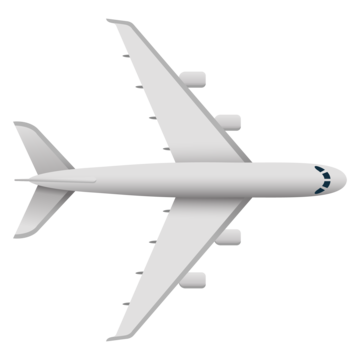Trade is the backbone of the global economy. Countries sell what they produce best and buy what they need. But imagine if one country starts charging extra for foreign products to protect its local industries. That extra charge is called a tariff. Think of it as a price tag that governments add to goods entering their country. Tariffs can make imported goods more expensive, making people buy more local products instead. Sounds simple, right? Well, not always.
While tariffs help local businesses grow, they can also make trade more expensive and slow down the exchange of goods between countries. If one country imposes a tariff, others might retaliate by doing the same. This back-and-forth can create trade tensions, making it harder for businesses to sell globally.
For exporters, tariffs are like unexpected toll gates on a highway adding costs and reducing profits. In some cases, they can even block trade altogether. That’s why understanding tariffs is crucial, especially for a country like India, which exports everything from jewellery and textiles to handicrafts and leather goods.
Tariff Story of India: Then and Now
India has always been a big player in international trade. From ancient times, Indian spices, textiles, and jewellery were famous across continents. The Silk Route and maritime trade routes carried Indian goods to places as far as Europe and East Asia. Even today, India remains a key exporter of a wide range of products, supplying textiles, gems, pharmaceuticals, handicrafts, and engineering goods to the world. Some of India’s biggest trading partners include the United States, the European Union, the Middle East, and Southeast Asia.
But tariffs have always been a tricky part of the game. In the past, India had high tariffs to protect its industries from foreign competition. The idea was to support local businesses and encourage self-sufficiency by making imported goods more expensive. However, as global trade agreements evolved, India started lowering its tariffs, joining the World Trade Organization (WTO) and signing Free Trade Agreements (FTAs) with several countries to encourage international trade.
Despite India’s openness to international trade, other countries continue to impose tariffs on Indian goods. One of the biggest trading partners, the United States, has introduced tariffs on Indian exports multiple times. These tariffs impact a wide range of industries, from agriculture to electronics and textiles. While some tariffs are meant to protect American industries, others are imposed due to trade disagreements.
Recently, things have taken a new turn with something called a reciprocal tariff—a policy where one country imposes a tariff in response to another country’s tariff. The U.S. has increasingly used reciprocal tariffs as a tool to balance international trade deficits and protect domestic businesses. Unfortunately, this has created challenges for Indian exporters, especially in industries that rely heavily on the American market, such as apparel, jewellery, handicrafts, and auto parts.
For Indian exporters, this means higher costs for buyers in America, leading to reduced demand and tougher competition from countries like Bangladesh, Vietnam, and China, which might not face the same tariffs. Smaller exporters, especially artisans and small businesses, struggle the most as they do not have the flexibility to absorb higher costs or find alternative markets quickly.
This raises an important question—what is the meaning of reciprocal tariff, and how does it impact Indian exports? Let’s dive deeper to understand how it works and what it means for businesses in India.
Understanding Tariffs: How Do They Work
A tariff is a tax that a government charges on imported goods. There are two main types:
- Import Tariffs: Taxes imposed on goods coming into a country.
- Export Tariffs: Taxes applied to goods leaving a country (less common).
Governments use tariffs for several reasons
- Protect Local Businesses – If imported goods are cheaper, local companies may struggle to compete. Tariffs make foreign goods costlier, helping local businesses survive.
- Earn Revenue: Tariffs bring money into the government’s pocket.
- Retaliation: If one country places tariffs, the other might respond with its own.
But tariffs can have downsides too
- Higher Prices: Consumers end up paying more.
- Trade Wars: Countries imposing tariffs on each other can lead to reduced trade.
- Less Competition: Without competition from imports, local businesses may not improve quality or reduce prices.
Now that we understand tariffs, let’s move on to reciprocal tariffs, the latest challenge in international trade.
What is a Reciprocal Tariff
A reciprocal tariff means that if one country imposes tariffs on another, the other country does the same in return. It’s like saying, “You tax my goods, I’ll tax yours.” This tit-for-tat approach is often used by countries to counter unfair trade policies and protect their own industries. However, for exporters, reciprocal tariffs can create a tough business environment.
For example, as commanded by President Donald Trump for reciprocal tariff if America puts a 10% tariff on Indian jewellery, India might respond by placing a 10% tariff on American goods coming into India. This kind of trade retaliation is designed to pressure the other country into removing its tariffs, but in reality, it often leads to trade wars and reduced exports for both sides.
Why are Countries Using Reciprocal Tariffs
- To Balance Trade: Some countries feel they are paying more in tariffs than they are collecting. They introduce reciprocal tariffs to even out the trade imbalance.
- To Protect Their Own Industries: If a foreign country imposes tariffs on its products, another country might do the same to make competition fair. This is especially common in industries like textiles, agriculture, and manufacturing.
- To Apply Pressure: Sometimes, reciprocal tariffs are used as a tool to force trade negotiations. Countries may use them to demand better trade deals or push for the removal of unfair restrictions.
India Faces Reciprocal Tariffs for the First Time
For India, reciprocal tariffs will be a new challenge. While India has dealt with trade restrictions and tariffs before, this will be the first time it faces large-scale reciprocal tariffs from a major trade partner like the U.S. Indian exporters have always relied on trade agreements and diplomatic negotiations to resolve tariff issues, but with the growing trend of reciprocal tariffs, businesses must prepare for a long term impact.
Role Of Trade Liberalization in Enhancing Global Market Access
Trade liberalization is a key driver of international economic growth, focusing on reducing or eliminating restrictions that hinder the free flow of goods and services. By removing trade barriers such as quotas, licensing requirements, and high customs duties, countries make it easier for businesses to engage in cross-border trade. This leads to improved market access, enabling exporters to reach new customers and expand globally.
Lowering import duties makes foreign goods more affordable for consumers and manufacturers, increasing competition and efficiency. At the same time, reducing or eliminating export duties encourages domestic producers to participate in international markets without added cost burdens. Together, these reforms help integrate local economies into the global supply chain.
Under various trade agreements, countries may offer preferential tariffs to specific partners, allowing certain goods to enter at reduced or zero duty rates. This creates an advantage for exporters in participating nations. However, when a country feels its interests are threatened—such as through unfair trade practices or imbalances—it may impose retaliatory tariffs in response, raising duties on imports from the offending nation.
Overall, trade liberalization boosts competitiveness, lowers prices, and fosters innovation, but must be strategically managed to balance national interests with global cooperation.
How Will Reciprocal Tariffs Affect Indian Exporters
- Higher Costs for Buyers: If American buyers have to pay additional tariffs on Indian products, they may shift to buying from other countries.
- Reduced Demand: Expensive products mean lower sales. Reciprocal tariffs will make Indian goods less competitive in the U.S. market.
- Uncertainty in Trade Agreements: Businesses thrive on stability, but reciprocal tariffs create unpredictability, making it harder to plan exports.
- Impact on Small Businesses: Reciprocal tariffs don’t just hurt big businesses; they also affect artisans, weavers, and small traders in India who rely on exports for their livelihood.
Imagine a local jeweller in Jaipur who sells handcrafted silver jewellery to American buyers. If those buyers suddenly have to pay an extra tariff during imports, they might switch to a different supplier from Thailand or Mexico, impacting the jeweller’s business and income. Similarly, textile exporters in Surat who send Indian fabrics to the U.S. may lose orders if their products become too expensive due to reciprocal tariffs.
With reciprocal tariffs being introduced on Indian goods, the country will need to rethink its trade policies, find new markets, and explore ways to remain competitive in the global economy. This is a turning point for Indian exporters, and how they adapt to these changes will determine the future of India’s global trade.
How the U.S. President Donald Trump is Targeting Indian Exports
India is one of the biggest exporters of apparel, jewellery, textiles, and handicrafts to the U.S. However, recent reciprocal tariffs by America have made things difficult.
- Jewellery Industry at Risk: India exports gold, diamond, and silver jewellery to the U.S. Tariffs on these products mean American buyers have to pay more during imports, reducing demand for Indian jewellery.
- Clothing and Textile Challenges: Indian textiles and garments are highly sought after in the U.S. With tariffs, Indian clothes may become too expensive, making buyers shift to alternatives like Bangladesh and Vietnam.
- Handicrafts Losing Their Edge: Indian handicrafts, famous for their intricate designs, face tough competition. Higher tariffs could drive customers toward cheaper, mass-produced alternatives from China.
- Leather Goods: Shoes, bags, and wallets from India are also impacted, making it harder for Indian brands to compete in the American market.
- Electronics and Machinery: Though not India’s biggest export sector, electrical goods and machinery have also been affected by U.S. tariffs.
If these tariffs continue, Indian exporters will need to find new ways to stay competitive.
Conclusion: What Lies Ahead for Indian Exporters
The global trade landscape is changing, and reciprocal tariffs are adding new challenges. Indian businesses in jewellery, textiles, and handicrafts must find ways to adapt.
Some ways to overcome these challenges include:
- Exploring New Markets: Expanding exports to Africa, Southeast Asia, and the Middle East can reduce dependence on the U.S.
- Using E-commerce: Platforms like Amazon Global, Etsy, and Shopify allow direct selling to customers worldwide.
- Improving Product Value: Offering unique, high-quality products can justify higher prices even with tariffs.
- Negotiating Trade Agreements: The Indian government can work on better trade deals to reduce tariffs.
How Will This Affect You
If you are an exporter in India, these tariffs might:
- Increase costs for your buyers, making your products less competitive.
- Reduce sales as foreign buyers look for cheaper alternatives.
- Cause financial strain, especially for small businesses.
- Force you to find new markets or change pricing strategies.
FAQs for Reciprocal Tariff
A tariff is a tax placed on goods imported from other countries.
To protect local industries, earn revenue, and balance trade.
A tariff that one country imposes in response to another country’s tariff.
Jewellery, textiles, handicrafts, leather goods, and electronics.
By finding new markets, selling online, and improving product quality.









